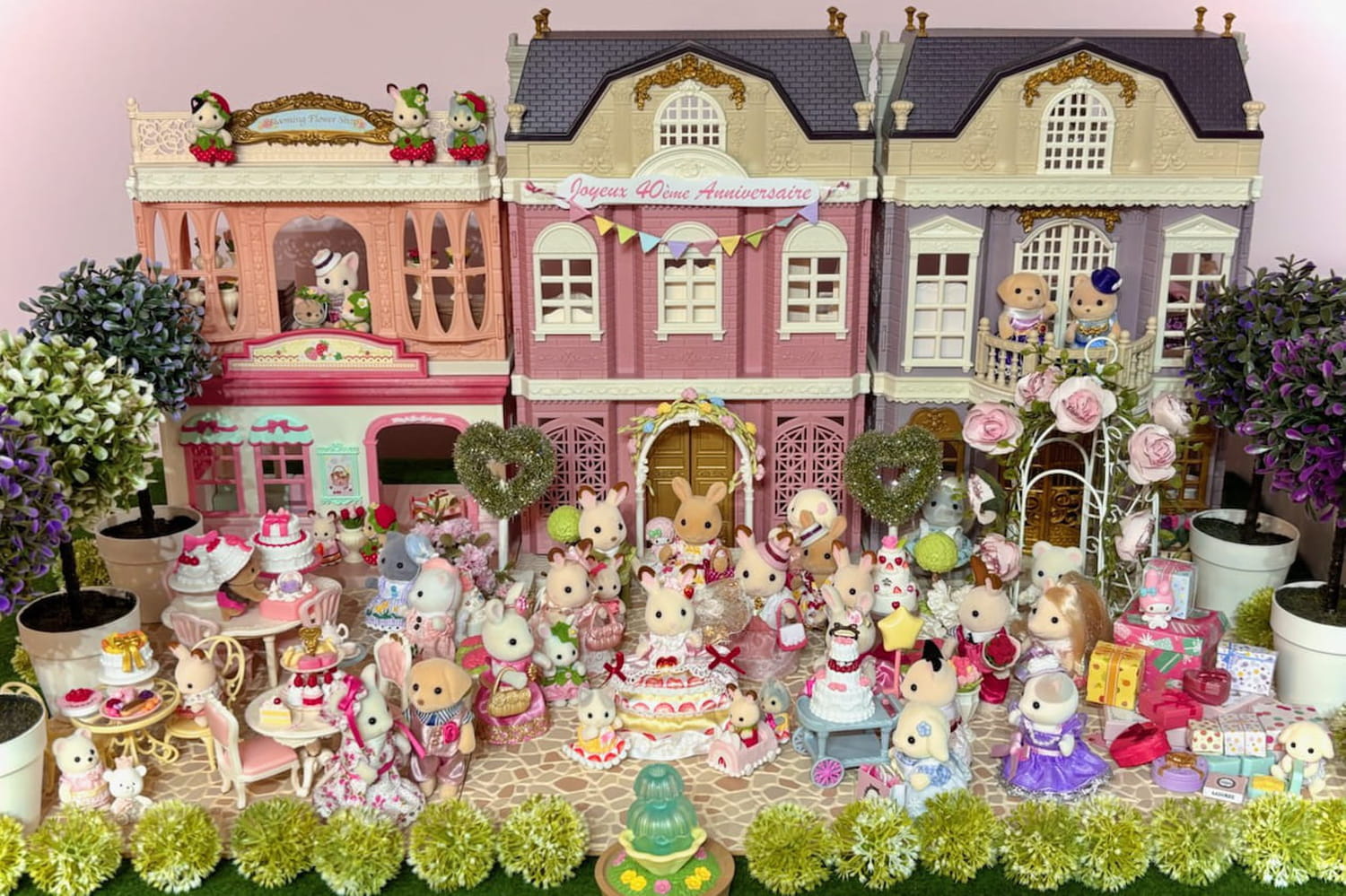The brand celebrates its fortieth anniversary this year. What are the models that enthusiasts are snapping up? Interview with Stéphanie, a mother collector who tells us more about her passion and the prized pieces that sell for “a small fortune”.
Sylvanian Families are celebrating their 40th anniversary this year, a rare longevity in the world of toys. Born in Japan in 1985, these miniature figurines representing families of adorable animals have won over several generations thanks to their warm universe, their wealth of details and above all their manufacturing quality. “The characters, houses, vehicles, accessories are particularly neat, with a very high level of detail“, underlines Camille Dal Degan, Sylvanian Families product manager. Thus, the brand appeals to both children and collectors. “Many adults, nostalgic for their childhood, collect rare pieces, sometimes Japanese, which can increase in value over time“, she adds. We spoke with Stéphanie, 48 years old, Sylvanian Families collector, who tells us about her passion and the pieces most sought after by collectors today.
It was with his daughter Rose that it all started. When this mother discovered Sylvanian Families ten years ago, her daughter was 4 years old. Very quickly, the collection took on a much deeper dimension. Rose, diagnosed with Asperger’s autism, presents a major discrepancy in her social interactions. “I discovered technical-behavioral psychotherapy: you learn the importance of playing with your child.”explains the mother. Through the staging of the Sylvanian Families (the fashion store, the baker, the dentist, the doctor) they recreate an entire universe together. “We take a family of little rabbits who are going shopping. We develop fine motor skills, we learn to go shopping, to structure daily life. It helped her immensely“, she tells us. This seemingly childish game then becomes an educational and therapeutic tool, but also a strong bond between mother and daughter.
With the growth of the collection, Stéphanie also discovered the passionate world of collectors. Some pieces have become real treasures. First of all, giant figurines, often displayed in stores, but never marketed, are highly sought after. “They do not meet international safety standards, so they are not sold to the public. I was lucky to find two, for less than 100 euros.” But today, a giant chocolate rabbit sells for 1,300 euros on eBay, and gray models can reach 1,500 to 2,000 euros.
Among the rarest pieces: the family of white ermines, made up of four characters, sells for around 800 euros, just like the families of owls. Vintage figurines or those in limited editions are also very popular with collectors. Sold in very few copies, they are generally overpriced. “There are also surprising vintage elements, like real porcelain dishes from the 80s or old furniture: a sink or a bathtub can sell for 40 to 50 euros each. And among the most expensive piece ever sold: a unique wooden Victorian house, probably a prototype, sold for 10,000 euros at auction. adds the collector. If vintage products are highly sought after, certain more recent models are also snapped up, such as the Mésange Blanche family sold for 35 euros on the official store website. The advantage? This exclusive, sold in a few copies, could “easily sell for around a hundred euros in 5 to 10 years” estimates Stéphanie.
Among the most expensive purchases that Stéphanie was able to acquire is the Grand Hôtel, a modern piece bought as soon as it was released for 300 euros, which she keeps preciously. In total, this enthusiast has spent between 7,000 euros and 10,000 euros in ten years for this beautiful collection, and spends on average 60 euros per month for the purchase of new figurines. But for her it is an investment: in 20 years, the value of these figurines can double, assures the woman who is also administrator of the Facebook group “Sylvanian Families passion”, thus bringing together all the fans of the brand and collectors. “The value increases especially for models sold in small quantities. And above all, you have to keep everything in a box. This is what guarantees real added value.” The advice is simple: don’t throw anything away, preserve everything and take good care of your collection. Who knows? Maybe at the bottom of a drawer, a forgotten figurine from your childhood could be worth a small fortune today.


